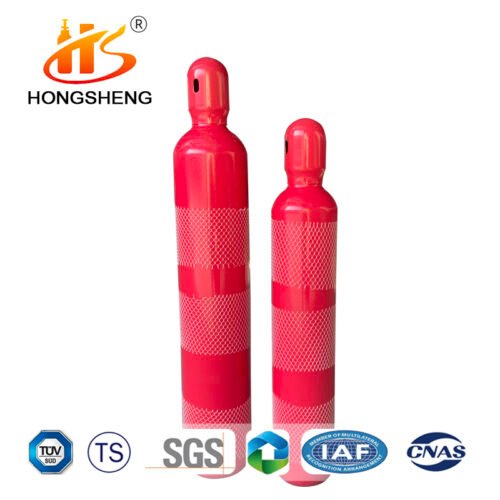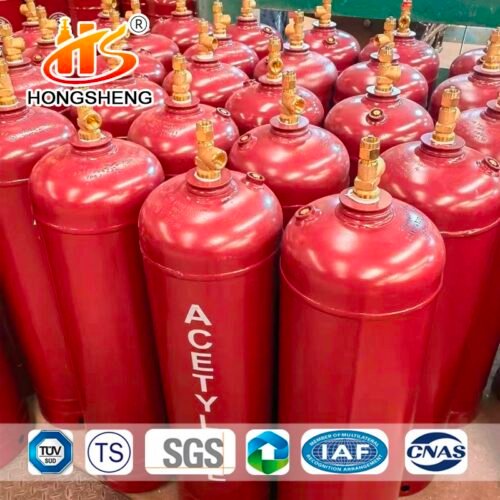Special care must be taken when storing and handling acetylene compressed cylinders.

1. Acetylene cylinders must always be kept upright with the valve cover closed.
2. Store small cylinders carefully, as they do not have protective caps.
3. Acetylene cylinders are not suitable for use in environments where temperatures may exceed 52C (125F). Above this temperature, if filled to maximum capacity, there is not enough room for acetone and acetylene to expand in the cylinder.
4. Always ensure that manifolds containing acetylene and oxygen cylinders are separated by a 5-foot firewall or at least a 20-foot distance, except in torch trucks used for cutting and welding.

ISO9809-3 150bar 37MN Small HVAC acetylene tank Small acetylene oxygen cylinder
| Type | A l'extérieur
Diamètre (mm) |
L'eau
Capacité (L) |
Bouteille
Hauteur (mm) |
Poids
(kg) |
Travailler
pression (Bar) |
Mur de conception
l'épaisseur (mm) |
Matériau
Notes |
| WMⅡ108-2.0L-150 | 108 | 2 | 310 | 3.62 | 150 | 2.9 | 37MN |
| WMⅡ108-3.0L-150 | 108 | 3.0 | 440 | 4.96 | 150 | 2.9 | 37MN |
| WMⅡ108-5.0L-150 | 108 | 5.0 | 696 | 7.74 | 150 | 2.9 | 37MN |
| WMⅡ140-4.0L-150 | 140 | 4.0 | 375 | 5.89 | 150 | 3.8 | 37MN |
| WMⅡ140-5.0L-150 | 140 | 5.0 | 447 | 6.96 | 150 | 3.8 | 37MN |
| WMⅡ140-8.0L-150 | 140 | 8.0 | 665 | 9.68 | 150 | 3.8 | 37MN |
| WMⅡ140-10.0L-150 | 140 | 10.0 | 818 | 11.9 | 150 | 3.8 | 37MN |
| WMⅡ159-8.0L-150 | 159 | 8.0 | 548 | 9.11 | 150 | 4.3 | 37MN |
| WMⅡ159-10.0L-150 | 159 | 10.0 | 660 | 10.9 | 150 | 4.3 | 37MN |
| WMⅡ159-12.0L-150 | 159 | 12.0 | 780 | 13.1 | 150 | 4.3 | 37MN |
| WMⅡ159-15.0L-150 | 159 | 15.0 | 932 | 16.8 | 150 | 4.3 | 37MN |
| WMⅡ180-20.0L-150 | 180 | 20.0 | 1012 | 24.8 | 150 | 4.9 | 37MN |

Acetylene is one of the widely known fuel gases in the world. It is also one of the dangerous gases due to the following characteristics:
1. Acetylene is unstable, which means it breaks down at high temperatures and pressures and becomes dangerous.
2. Acetylene has a wide flammability range. The lowest flammability limit in air is 2.4% and the highest is 83%. These flammable properties mean that any small gas leak can cause a fire.
3. Acetylene also has low ignition energy, which means that when there is a low energy spark from a source such as static electricity, acetylene may ignite. This is one of the reasons why acetylene cylinders are not transported in closed vehicles. In the past, there have been several accidents in which acetylene was ignited by the electrical systems of these vehicles.
























